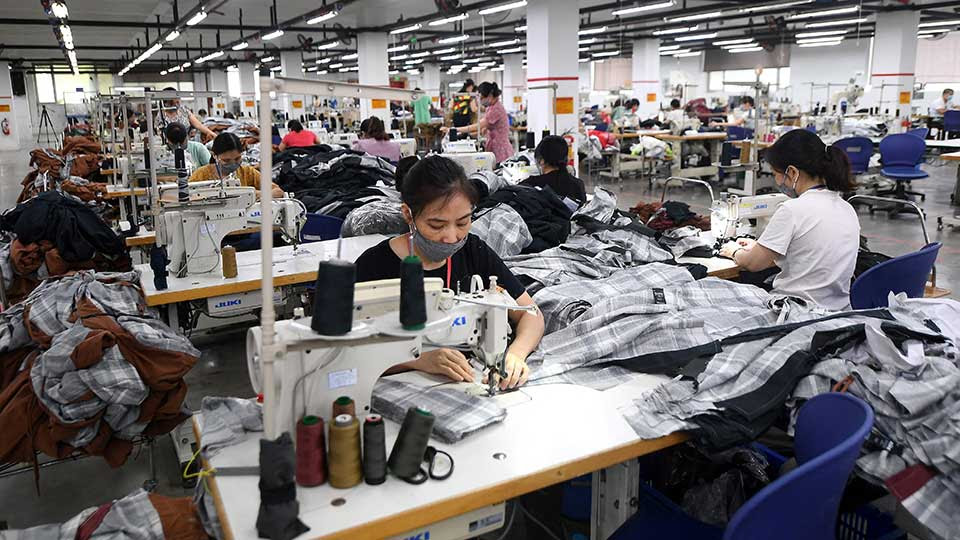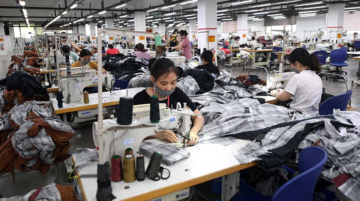
Amid intensifying global U.S.-China tensions and global efforts to diversify supply chains, Vietnam is consolidating its position as a key Southeast Asian industrial hub. In the first quarter of this year, Vietnam’s FDI is surging 40% on reinvestments.
According to Vietnam’s Foreign Investment Agency, the country attracted $13.82 billion in foreign direct investment (FDI) in the first four months of 2025, a 39.9% year-on-year increase.
The surge is not from new investments. It comes from deepening commitments by existing investors: reinvestment in current projects soared nearly fourfold to $6.4 billion.
Capital contributions and share purchases climbed 2.1 times to $1.83 billion. This pattern underscores a growing preference for expansion over new ventures, a vote of confidence in Vietnam’s long-term investment climate.
At a time when global capital flows are increasingly shaped by geopolitical uncertainty and supply chain diversification, Vietnam’s FDI profile underscores its strategic consolidation as a Southeast Asian production base closely tied to Asian capital.
Multinationals recalibrate global production amid geopolitical frictions, and Vietnam’s manufacturing base is emerging as a preferred destination for Asian capital.
The shift reflects a broader China+1 strategy, with companies looking to diversify operations while staying within East Asia’s industrial ecosystem.
Reinvestment Drives the Surge
The agency reported that newly registered investment projects declined by 23.8% to $5.59 billion. However, this was offset by a powerful surge in reinvestment by current investors, with capital injections into ongoing projects nearly quadrupling compared to the same period in 2024.
Capital contributions and share purchases also climbed to $1.83 billion, a 2.1-fold year-on-year increase.
The sharp rise in expansionary capital indicates mature confidence in Vietnam’s investment environment. Companies already embedded in the country choose to deepen their commitments rather than seek alternatives.
Asian-Led Capital Flows Reinforce Vietnam’s Strategic Position
The data also confirmed Vietnam’s continued integration into regional capital ecosystems, with Asian investors dominating Vietnam’s FDI inflows. Singapore led all foreign investors with $3.2 billion, followed closely by South Korea with 2.8 billion. China, Japan, and Hong Kong completed the top five.
These patterns reflect an increasingly East Asia-centric investment structure, positioning Vietnam as a preferred destination for capital reallocations within the region, particularly amid trade tensions and realignment away from dependence on Western markets.
The Foreign Investment Agency also noted early signs of diversification, with rising participation from non-traditional markets, including some EU and U.S. investors, though these remained secondary in volume.
Manufacturing Remains Vietnam’s Economic Backbone
Vietnam’s FDI enduring appeal as a manufacturing powerhouse remained evident. The manufacturing and processing sector drew $8.9 billion in FDI, a 35.1% rise year-on-year.
Sectors such as electronics, machinery, and textiles continue to benefit from companies shifting partial production out of China to mitigate tariff and supply chain risks.
The figure reinforces Vietnam’s centrality in the global manufacturing landscape, particularly in electronics, machinery, and textiles sectors, where China+1 strategies have increasingly prioritized Vietnam as a complementary base.
The real estate sector also rebounded strongly, drawing nearly $2.83 billion in FDI, a 61.9% increase from a year earlier.
The surge suggests renewed momentum in urban infrastructure, industrial parks, and housing development, as Vietnam’s urbanization and industrial growth accelerate.
More minor but noteworthy inflows also went to professional, scientific, and technological activities ($611 million) and accommodation and catering ($352 million), indicating the broadening of Vietnam’s service and innovation economy.
Geographic Concentration Highlights Regional FDI Disparities
Investment continued to cluster in provinces with established investment promotion infrastructure and logistical connectivity. Bac Ninh led all provinces with USD 2.69 billion. That is followed by Dong Nai with $1.52 billion and Ho Chi Minh City with $1.48 billion. Other key destinations included Hanoi, Ba Ria–Vung Tau, and Ha Nam.
The data highlights a persistent regional disparity. Northern and southern industrial zones capture the bulk of Vietnam’s FDI, while central and remote areas continue to lag.
This pattern reflects Vietnam’s evolving dual-speed development, where globally integrated urban centers rapidly advance while peripheral regions remain less connected to international capital flows.
Strategic Implications
Vietnam’s FDI profile in early 2025 reveals a shift in capital behavior, away from riskier new project development toward consolidation and expansion of existing operations.
It also confirms Vietnam’s entrenched role in regional supply chains shaped by China’s industrial deceleration and U.S. decoupling efforts.
The heavy presence of Singaporean, Korean, and Chinese investors signals a continued Asian regionalism in investment patterns, where capital circulates within trusted networks amid global instability.










